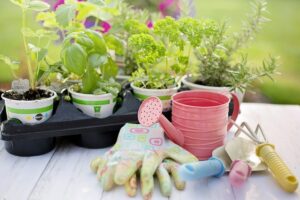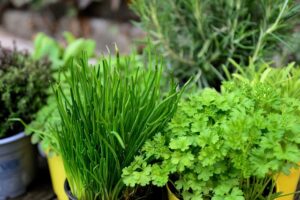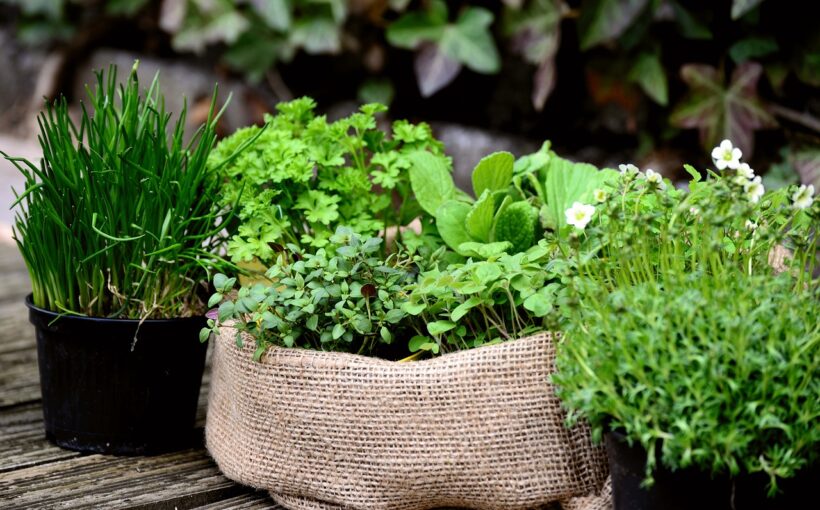Do you think your backyard needs a bit of a makeover? Do you want to do something that is both fun and practical? Then why not try herb gardening? You may think that herb gardening is only for those who have green thumbs, but the truth is, anyone can do it. It’s a great way to add some life and color to your backyard while also providing you with fresh, healthy herbs for cooking and other uses.
Did you know that 90% of the herbs we use in cooking come from just 10 common herbs? These include basil, thyme, rosemary, mint, and parsley, just to name a few. Imagine how much money you can save by growing these herbs in your garden instead of buying them from the grocery store. So, without further ado, let’s learn just how easy it is to grow your herbs with tips for successful herb gardening.
Choose Your Easy-to-Grow Herbs
 As a beginner, it’s best to start with easy-to-grow varieties that are forgiving and resilient. So, which herbs should you go for? One excellent choice is basil. Not only does it add a burst of flavor to your dishes, but it also thrives in both containers and garden beds. Another great option is mint – perfect for refreshing summer drinks or garnishing desserts.
As a beginner, it’s best to start with easy-to-grow varieties that are forgiving and resilient. So, which herbs should you go for? One excellent choice is basil. Not only does it add a burst of flavor to your dishes, but it also thrives in both containers and garden beds. Another great option is mint – perfect for refreshing summer drinks or garnishing desserts.
And let’s not forget about chives! These vibrant green beauties are low-maintenance and fantastic for adding a mild onion-like taste to various dishes. With these easy-to-grow herbs on hand, you’ll be well on your way to creating an herb garden that will make your taste buds dance with joy.
Know How to Water Them Properly
Watering your herb garden properly is essential for its success. Like humans, plants do need water to survive and thrive. But it’s important to know the right way to water them. As a matter of fact, be sure you use the right water. But do you know why softened water is bad for your plants? Softened water contains high levels of salt, which can be harmful to your herbs. The salt in the water can build up in the garden soil and damage the roots, causing the plants to wilt or die. So, it’s best to use unsoftened tap water or collect rainwater for your herbs.
Also, make sure you are watering your herbs at the base of the plant rather than from overhead. This helps prevent moisture-related diseases and ensures that water reaches the roots where it’s needed most.
Provide Essential Nutrients to Your Herbs
So, you’ve chosen your easy-to-grow herbs and learned how to water them properly. But did you know that providing essential nutrients is crucial for the successful growth of your herb garden? Just like us humans, plants need their vitamins, too. To ensure your herbs stay healthy and vibrant, it’s important to give them the right nutrients. One way to do this is by using organic fertilizers or compost. These natural sources of nutrients will nourish your plants without exposing them to harmful chemicals in the environment.
Harvest Herbs Regularly With the Right Technique
 Harvesting herbs is like the reward at the end of all your hard work in the garden. But it’s important to know how to do it right so you can enjoy the full flavor and health benefits of your herbs. The first rule is to pick them regularly. This encourages new growth and keeps your plants productive throughout the season.
Harvesting herbs is like the reward at the end of all your hard work in the garden. But it’s important to know how to do it right so you can enjoy the full flavor and health benefits of your herbs. The first rule is to pick them regularly. This encourages new growth and keeps your plants productive throughout the season.
When harvesting, make sure you use the correct technique for each herb. For leafy herbs like basil or parsley, pinch off individual leaves from the outer parts of the plant, avoiding any flowers or buds. With woody herbs like rosemary or thyme, you can trim whole branches by cutting just above a set of healthy leaves.
Wrapping Up
And there you have it, folks. With these essential tips for successful herb gardening, you’ll be well on your way to creating a vibrant and thriving herb garden. Don’t be afraid to experiment and get creative with different combinations of herbs in your garden or even indoors. Herb gardening is an enjoyable journey filled with endless possibilities.…

